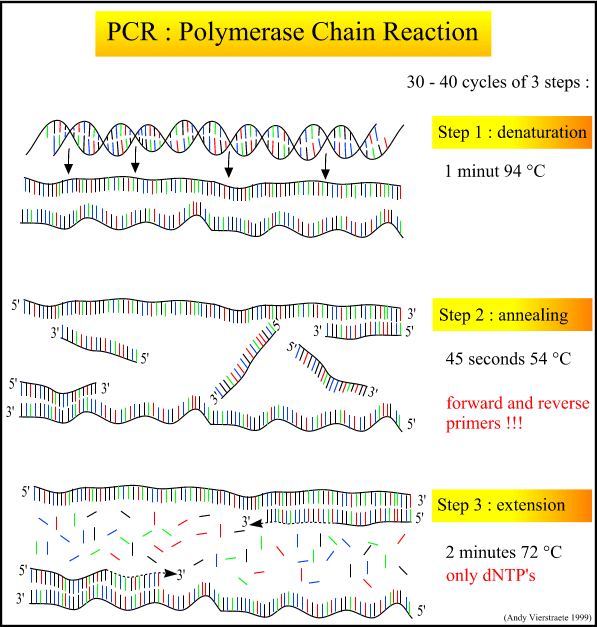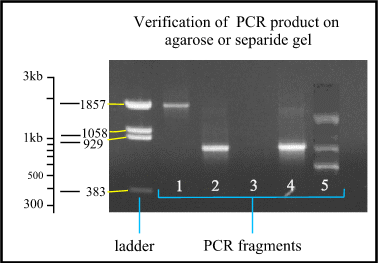14 February 2006
From the bottom of my
 I wish you all a HAPPY
I wish you all a HAPPY  Day!
Day!Thanks to cholesterol-metabolizer.com and animatedsoftware.com for the pictures.
27 January 2006
pictures for Friday
I am going home this weekend as my mother has requested a visit from me. I am kind of excited about going as it has been a month since I last saw her. For Christmas I gave her a “Red Lion Amaryllis” and she said this morning that it is getting ready to bloom. So maybe this weekend I’ll get to see the start of the colour explosion!

thanks to Dutchbulbs.com for the Pic!
I am very excited! (Can you tell?) I had an amaryllis earlier in the winter season, what is called an “Apple Blossom”, and the flowers on that one bloomed beautifully during the holidays.
 thanks to white flower farm for the pic!
thanks to white flower farm for the pic!
It was nice to have the brightness and colour especially when the lab was so dead due to so many people taking off. I hope everyone has a lovely weekend.

thanks to Dutchbulbs.com for the Pic!
I am very excited! (Can you tell?) I had an amaryllis earlier in the winter season, what is called an “Apple Blossom”, and the flowers on that one bloomed beautifully during the holidays.
 thanks to white flower farm for the pic!
thanks to white flower farm for the pic! It was nice to have the brightness and colour especially when the lab was so dead due to so many people taking off. I hope everyone has a lovely weekend.
13 January 2006
PSA for Friday the 13's
 (thanks to Kidsturncentral2.com
(thanks to Kidsturncentral2.com A bit of information on how the whole things started and about it from Wikipedia.com:
“A Friday occurring on the 13th day of any month is considered to be a day of bad luck in many superstitions around the globe. Similar superstitions exist in some other traditions. In Greece and Spain, for example, Tuesday the 13th takes the same role. The fear of Friday the 13th is called paraskavedekatriaphobia, paraskevidekatriaphobia or friggatriskaidekaphobia, a specialized form of triskaidekaphobia, a phobia (fear) of the number thirteen.
Origins: The origin of the Friday the 13th superstition has been linked to the belief that there were 13 people at The Last Supper of Jesus, who was crucified on Good Friday, but it probably originated in medieval times. It has also been linked to the fact that a lunisolar calendar must have 13 months in some years, while the solar Gregorian calendar and lunar Islamic calendar always have 12 months in a year. Another suggestion is that the belief originated in a Norse myth about twelve gods having a feast in Valhalla. The mischievous Loki gate-crashed the party as an uninvited 13th guest and arranged for Hod, the blind god of darkness, to throw a branch of mistletoe at Balder, the god of joy and gladness. Balder was killed instantly and the Earth was plunged into darkness and mourning as a result. Both the first and last explanations, however, seem more relevant to the superstition linked to having 13 people at the same table during a meal.
Effects: Strangely, there is evidence to suggest that Friday the 13th is actually unlucky for some. Psychologists have found that some people are especially likely to have accidents or fall ill on Friday the 13th. This has been attributed to such people feeling a heightened state of anxiety on that day. The Stress Management Center and Phobia Institute in Asheville, North Carolina estimates that in the United States alone, $800 or $900 million is lost in business each Friday the 13th because some people will not travel or go to work.
The date is also well-known in the motorcycle (biker) community: since 1981, motorcycle enthusiasts and vendors gather every Friday the 13th in Port Dover, Ontario, Canada. This tradition started on November 13, 1981 by Chris Simons as a gathering of approximately 25 friends. The event has grown substantially, with an estimated 100,000 people attending in August 2004, as well as music bands, vendors, a bike show, etc.
In the Spanish-speaking world, it is Tuesday the 13th (as well as Tuesdays in general) that brings bad luck; a proverb runs En martes, ni te cases ni te embarques (on Tuesday, neither get married nor start a journey).
01 December 2005
Theme 2005: "Stop AIDS. Keep the Promise"

Thanks to AIDSntx.org for the image.
So things to consider this the first day of December – Also known as World AIDS day:
Worldwide ~40.3 MILLION people are now infected/living with HIV/AIDS.
~6% of that number are children.
~45% of that number are women, many of child bearing age.
It is estimated that at least 1/3 of those infected with HIV/AIDS are unaware of their disease status.
~5 million people were infected in 2005 alone.
Over 3 million people have died this year of HIV/AIDS.
HIV/AIDS was first identified/described as a transmissible disease (1981) it is estimated that at least 25 million people have died due to being infected.
The ages of 15-24 is STILL the fastest growing group, accounting for at least half of all of the new HIV/AIDS cases.
While it is becoming more and more possible to lead a “normal life” after being infected with HIV/AIDS – there is STILL NO CURE.
If you are not living in a “industrialized country” your chances of receiving drug treatment for your HIV/AIDS is less than 20%.
Many of these numbers are estimations, and it is suspected that the numbers are actually much higher, but due to lack of education, desire, and/or access to proper medical care many people are not diagnosed and treated.
Bristol-Myers Squibb has set up a site today that will donate $1.00 USD to HIV/AIDS research when you ”light a candle” on their site.
Also, if you are sexually active and want to protect yourself and your partner a Free sample of Trojan Brand Condoms can be obtained from the company directly via this site.
15 September 2005
answers to some ? from the last posting
Admitedly most of the hardcore scientists in my life know this (I guess I accidentally caught you in a trap here) so they try hard not to explain to me, because it's clear from the start that I won't get it no matter what you say.
Hey! I am REALLY trying here! If it is not helping, I can try explaining it another way. I do not mind. My job as a scientist is to help the general public in one way or another. If they do not understand what I am doing and saying, than how can I expect them to make sure that I get the funding that I need to do more research? Science is REALLY NOT that hard to understand, but so many people have been turned off by bad teachers/ones with no patience for explaining that the general population of the world thinks that science is TOO hard to even be bothered with!!! I could go on about this topic for hours….
I'm not sorry I asked, because if I didn't ask... I'd never understand anything about science, even in my warped (and clearly incorrect) way
When I start explaining things…sometimes people get this glassy eyed look and you can see the wheels in the head turning trying to find a way out…I just want to make sure that you were not doing that.
Ok, so then one last question...
There seems to be a bit more than just one here!!!
**wipes brow, cracks knuckles to prepare**
Why do you want to PCR your DNA?
We PCR the DNA to obtain many copies of it, is the short answer. For the long answer, see next question/answer set.
Why do we need a huge # of copies of a gene if it's not cloning it?
Okay, first off, do not think of PCR as a clone. Think of a PCR as a photocopy of the original DNA; trust me it will help you out in the long run. One reason that I say this is because things can go wrong with Photocopying. i.e. The alignment of the original was slightly off, so you might cut off the start of a word or you cut the top off on the copy, etc…I am sure that you have photocopied enough times in your daily struggles as a grad student. Some times the PCR makes a mistake, but we now pay a whole lot of money for reagents that have “proof reading” functions for our PCR’s so that this does not happen. It is like paying to have Kinko’s to do your photocopying, as to some random undergrad.
But anyway, on to your question – say at a crime seen there is not even one drop of blood left by a killer. To help law enforcement figure out whose blood it is, they need to obtain information from it. As blood is notoriously hard to interrogate (it is pretty silent), we use PCRing and sequencing to obtain information that it would not normally give out. We can use small amounts of the blood, extract the DNA from it and then use PCRing and sequencing techniques so that we see more of the DNA and thus use that information to compare it to a person that is suspected of the crime when they give us (or we obtain) a sample for comparison.
(and frankly, even if it were cloning it, why do we need it?)
We only clone when questions about the DNA arise, such as is that personal DNA really saying what we think it is?
How does this help?
Cloning is a technique that is used for conformation of a DNA sequence.
And what if it doesn't help?
It does. *evil laugh* And if it does not want to play, we have other methods of making the DNA talk to us…*very evil laugh*
Of course my peeps were veggie ones! (zero calories, too!)
Just making sure that you would not be holding any resentment or anything towards me
Hey! I am REALLY trying here! If it is not helping, I can try explaining it another way. I do not mind. My job as a scientist is to help the general public in one way or another. If they do not understand what I am doing and saying, than how can I expect them to make sure that I get the funding that I need to do more research? Science is REALLY NOT that hard to understand, but so many people have been turned off by bad teachers/ones with no patience for explaining that the general population of the world thinks that science is TOO hard to even be bothered with!!! I could go on about this topic for hours….
I'm not sorry I asked, because if I didn't ask... I'd never understand anything about science, even in my warped (and clearly incorrect) way
When I start explaining things…sometimes people get this glassy eyed look and you can see the wheels in the head turning trying to find a way out…I just want to make sure that you were not doing that.
Ok, so then one last question...
There seems to be a bit more than just one here!!!
**wipes brow, cracks knuckles to prepare**
Why do you want to PCR your DNA?
We PCR the DNA to obtain many copies of it, is the short answer. For the long answer, see next question/answer set.
Why do we need a huge # of copies of a gene if it's not cloning it?
Okay, first off, do not think of PCR as a clone. Think of a PCR as a photocopy of the original DNA; trust me it will help you out in the long run. One reason that I say this is because things can go wrong with Photocopying. i.e. The alignment of the original was slightly off, so you might cut off the start of a word or you cut the top off on the copy, etc…I am sure that you have photocopied enough times in your daily struggles as a grad student. Some times the PCR makes a mistake, but we now pay a whole lot of money for reagents that have “proof reading” functions for our PCR’s so that this does not happen. It is like paying to have Kinko’s to do your photocopying, as to some random undergrad.
But anyway, on to your question – say at a crime seen there is not even one drop of blood left by a killer. To help law enforcement figure out whose blood it is, they need to obtain information from it. As blood is notoriously hard to interrogate (it is pretty silent), we use PCRing and sequencing to obtain information that it would not normally give out. We can use small amounts of the blood, extract the DNA from it and then use PCRing and sequencing techniques so that we see more of the DNA and thus use that information to compare it to a person that is suspected of the crime when they give us (or we obtain) a sample for comparison.
(and frankly, even if it were cloning it, why do we need it?)
We only clone when questions about the DNA arise, such as is that personal DNA really saying what we think it is?
How does this help?
Cloning is a technique that is used for conformation of a DNA sequence.
And what if it doesn't help?
It does. *evil laugh* And if it does not want to play, we have other methods of making the DNA talk to us…*very evil laugh*
Of course my peeps were veggie ones! (zero calories, too!)
Just making sure that you would not be holding any resentment or anything towards me
14 September 2005
...
Over at LJ, i was just asked about what a PCR was...this is my answer in case any of you were wondering as well and we fearful of asking.
The purpose of a PCR (Polymerase Chain Reaction) is to make a huge number of copies of a gene. This is necessary to have enough starting template for sequencing.
1.The cycling reactions : There are three major steps in a PCR, which are repeated for 30 or 40 cycles. This is done on an automated cycler, which can heat and cool the tubes with the reaction mixture in a very short time. (Sandi’s note: This was actually first done with hot and cold water baths and lab personal running around dropping tubes into different temperatures and set intervals…sounds like fun right? There are people in my lab who remember doing it this way!)
A. Denaturation at 94°C :
During the denaturation, the double strand melts open to single stranded DNA, all enzymatic reactions stop (for example : the extension from a previous cycle).
B. Annealing at 54°C :
The primers are jiggling around, caused by the Brownian motion. Ionic bonds are constantly formed and broken between the single stranded primer and the single stranded template. The more stable bonds last a little bit longer (primers that fit exactly) and on that little piece of double stranded DNA (template and primer), the polymerase can attach and starts copying the template. Once there are a few bases built in, the ionic bond is so strong between the template and the primer, that it does not break anymore.
C. Extension at 72°C :
This is the ideal working temperature for the polymerase. The primers, where there are a few bases built in, already have a stronger ionic attraction to the template than the forces breaking these attractions. Primers that are on positions with no exact match, get loose again (because of the higher temperature) and don't give an extension of the fragment.
The bases (complementary to the template) are coupled to the primer on the 3' side (the polymerase adds dNTP's from 5' to 3', reading the template from 3' to 5' side, bases are added complementary to the template)

Because both strands are copied during PCR, there is an exponential increase of the number of copies of the gene. Suppose there is only one copy of the wanted gene before the cycling starts, after one cycle, there will be 2 copies, after two cycles, there will be 4 copies, three cycles will result in 8 copies and so on.

2. Is there a gene copied during PCR and is it the right size ? Before the PCR product is used in further applications, it has to be checked if :
A. There is a product formed. Though biochemistry is an exact science, not every PCR is successful. There is for example a possibility that the quality of the DNA is poor, that one of the primers doesn't fit, or that there is too much starting template
B. The product is of the right size. It is possible that there is a product, for example a band of 500 bases, but the expected gene should be 1800 bases long. In that case, one of the primers probably fits on a part of the gene closer to the other primer. It is also possible that both primers fit on a totally different gene.
C. Only one band is formed. As in the description above, it is possible that the primers fit on the desired locations, and also on other locations. In that case, you can have different bands in one lane on a gel.

(ABOVE) Figure 5 : Verification of the PCR product on gel. The ladder is a mixture of fragments with known size to compare with the PCR fragments. Notice that the distance between the different fragments of the ladder is logarithmic.
Lane 1 : PCR fragment is approximately 1850 bases long.
Lane 2 and 4 : the fragments are approximately 800 bases long.
Lane 3 : no product is formed, so the PCR failed. (**Sandi’s note: this could have also been what we call a negative control where we use everything BUT the DNA just to make sure that nothing was contaminated with DNA and thus that contaminated DNA is what got amplified.)
Lane 5 : multiple bands are formed because one of the primers fits on different places.
I admit it I did not just write this all up for you…But I did have to hunt all over Google to find it written and illustrated, just for your wonderful question. And as I give credit where credit is due, I borrowed the information from this site which is actually part of Ghent University in the Netherlands. I also have to say that THIS IS THE COOLEST THING EVER!!!!
The purpose of a PCR (Polymerase Chain Reaction) is to make a huge number of copies of a gene. This is necessary to have enough starting template for sequencing.
1.The cycling reactions : There are three major steps in a PCR, which are repeated for 30 or 40 cycles. This is done on an automated cycler, which can heat and cool the tubes with the reaction mixture in a very short time. (Sandi’s note: This was actually first done with hot and cold water baths and lab personal running around dropping tubes into different temperatures and set intervals…sounds like fun right? There are people in my lab who remember doing it this way!)
A. Denaturation at 94°C :
During the denaturation, the double strand melts open to single stranded DNA, all enzymatic reactions stop (for example : the extension from a previous cycle).
B. Annealing at 54°C :
The primers are jiggling around, caused by the Brownian motion. Ionic bonds are constantly formed and broken between the single stranded primer and the single stranded template. The more stable bonds last a little bit longer (primers that fit exactly) and on that little piece of double stranded DNA (template and primer), the polymerase can attach and starts copying the template. Once there are a few bases built in, the ionic bond is so strong between the template and the primer, that it does not break anymore.
C. Extension at 72°C :
This is the ideal working temperature for the polymerase. The primers, where there are a few bases built in, already have a stronger ionic attraction to the template than the forces breaking these attractions. Primers that are on positions with no exact match, get loose again (because of the higher temperature) and don't give an extension of the fragment.
The bases (complementary to the template) are coupled to the primer on the 3' side (the polymerase adds dNTP's from 5' to 3', reading the template from 3' to 5' side, bases are added complementary to the template)

Because both strands are copied during PCR, there is an exponential increase of the number of copies of the gene. Suppose there is only one copy of the wanted gene before the cycling starts, after one cycle, there will be 2 copies, after two cycles, there will be 4 copies, three cycles will result in 8 copies and so on.

2. Is there a gene copied during PCR and is it the right size ? Before the PCR product is used in further applications, it has to be checked if :
A. There is a product formed. Though biochemistry is an exact science, not every PCR is successful. There is for example a possibility that the quality of the DNA is poor, that one of the primers doesn't fit, or that there is too much starting template
B. The product is of the right size. It is possible that there is a product, for example a band of 500 bases, but the expected gene should be 1800 bases long. In that case, one of the primers probably fits on a part of the gene closer to the other primer. It is also possible that both primers fit on a totally different gene.
C. Only one band is formed. As in the description above, it is possible that the primers fit on the desired locations, and also on other locations. In that case, you can have different bands in one lane on a gel.

(ABOVE) Figure 5 : Verification of the PCR product on gel. The ladder is a mixture of fragments with known size to compare with the PCR fragments. Notice that the distance between the different fragments of the ladder is logarithmic.
Lane 1 : PCR fragment is approximately 1850 bases long.
Lane 2 and 4 : the fragments are approximately 800 bases long.
Lane 3 : no product is formed, so the PCR failed. (**Sandi’s note: this could have also been what we call a negative control where we use everything BUT the DNA just to make sure that nothing was contaminated with DNA and thus that contaminated DNA is what got amplified.)
Lane 5 : multiple bands are formed because one of the primers fits on different places.
I admit it I did not just write this all up for you…But I did have to hunt all over Google to find it written and illustrated, just for your wonderful question. And as I give credit where credit is due, I borrowed the information from this site which is actually part of Ghent University in the Netherlands. I also have to say that THIS IS THE COOLEST THING EVER!!!!
Grrr...
So many different things have been going though my head not only today, but as of late and as I await my PCR here in the lab on a Wednesday night (1hour and 45 minutes to go!), I figured that I should get some of them out.
I am angry with Sallie Mae right now. I am back in school, thus I should not be paying my student loans as of right now. But (of course, when it there not a but involved), because I am in the “Medical School” here and yet not “IN MEDICAL SCHOOL” they are having some issues…thus, they keep on taking money out of my bank account. Grrr…This weekend I am off to Up State NY…some of my friends from NY (we are talking the 5 burrows, L.I. and Westchester County) have all looked and questioned me about going “Upstate”…I did not know that it would be that big of a deal…I have felt like I just told them that I have been hiding an extra pair of eyes with my hair in the back of my head…but then again…what do I know? The topics of conversations here in dc: the hearing for Roberts. When that is not the topic, the whole mess way down south and how that will impact the response to what is expected to be a huge mess in the Carolina’s. Let me tell you, listening to the speeches from the UN meetings today has been a pleasure. I find it funny that people (world personalities/leaders of countries) have finally decided that the fact that there is no firm and concrete definition of “Terrorism” in any of the amendments that have been passed is a problem! Hello??? Listen to the experts – YOUR OWN EXPERTS! They have been saying this for years!!!! There is no firm world wide accepted definition of terrorism. If there was, I (and my classmates) would not sit through the start of every semester and listen to the run through of the different definitions, what a professor thinks of the different expert ideas and thoughts and what definition we will be using that semester with them…trust me, it would save us all a whole lot of time if there was at least a very simple widely accepted answer/definition…I have so reading that I need to get done for class while I await for the machines to be finished with my PCR’s…the joys of school…
I am angry with Sallie Mae right now. I am back in school, thus I should not be paying my student loans as of right now. But (of course, when it there not a but involved), because I am in the “Medical School” here and yet not “IN MEDICAL SCHOOL” they are having some issues…thus, they keep on taking money out of my bank account. Grrr…This weekend I am off to Up State NY…some of my friends from NY (we are talking the 5 burrows, L.I. and Westchester County) have all looked and questioned me about going “Upstate”…I did not know that it would be that big of a deal…I have felt like I just told them that I have been hiding an extra pair of eyes with my hair in the back of my head…but then again…what do I know? The topics of conversations here in dc: the hearing for Roberts. When that is not the topic, the whole mess way down south and how that will impact the response to what is expected to be a huge mess in the Carolina’s. Let me tell you, listening to the speeches from the UN meetings today has been a pleasure. I find it funny that people (world personalities/leaders of countries) have finally decided that the fact that there is no firm and concrete definition of “Terrorism” in any of the amendments that have been passed is a problem! Hello??? Listen to the experts – YOUR OWN EXPERTS! They have been saying this for years!!!! There is no firm world wide accepted definition of terrorism. If there was, I (and my classmates) would not sit through the start of every semester and listen to the run through of the different definitions, what a professor thinks of the different expert ideas and thoughts and what definition we will be using that semester with them…trust me, it would save us all a whole lot of time if there was at least a very simple widely accepted answer/definition…I have so reading that I need to get done for class while I await for the machines to be finished with my PCR’s…the joys of school…

